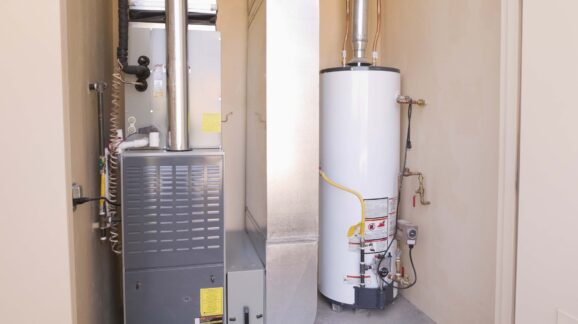CEI Leads Coalition Comment Critical of DOE’s Proposed Furnace Regulation

Photo Credit: Getty
Several recent Department of Energy (DOE) efficiency standards for appliances have been a bad deal for consumers, but the latest proposed standard for residential natural gas furnaces is worse than most. As detailed in an October 4 coalition comment signed by CEI and 13 other free market organizations, the rule could deprive millions of homeowners of the best furnace option for them. And it is all for nothing, as the agency’s claimed climate change benefits from the rule are wild exaggerations.
Specifically, the proposed new efficiency standard is so stringent that it would all but ban conventional non-condensing furnaces now used in tens of millions of homes in favor of costlier but more efficient condensing furnaces. The difference, in a nutshell, is that a condensing furnace has a second heat exchanger that captures some of the heat that would otherwise go into the exhaust stream and utilizes it, making for a more efficient system. Sounds great—until you learn that doing so makes it more difficult to vent the exhaust. Depending on a home’s age and configuration, using a condensing furnace may be impractical, if not impossible. In some cases, it may be downright unsafe.
For many other homes, a condensing furnace may well be the best choice—and homeowners would be free to make that choice with or without federal regulations. But, as is often the case with DOE appliance standards, one size does not fit all. As we noted in our comment, “no two homes are alike, nor are any two homeowners.”
Fortunately, the statute giving rise to the DOE appliance standards program, the Energy Policy and Conservation Act (EPCA), forbids standards so stringent that they eliminate features valued by consumers. The law states that no standard can be issued if the agency finds by a preponderance of evidence that it is “likely to result in the unavailability in the United States … of performance characteristics (including reliability), features, sizes, capacities, and volumes that are substantially the same as those generally available in the United States at the time of the Secretary’s finding.” [Hereinafter the “features provision.”] The features provision is intended to protect consumers from natural gas furnace standards so stringent so as to effectively force non-condensing versions off the market in favor of condensing furnaces with very different characteristics that make them incompatible with some homes.
DOE tries to get around this requirement by arguing that heat is heat and that consumers don’t care how it is generated. In the agency’s words, “the technology used to supply heated air or hot water is not a performance-related ‘feature’ that provides a distinct consumer utility under EPCA.” This is an unacceptably narrow reading of the features provision’s broad language, which protects every aspect of a product that is of relevance to consumers. Here, the feature at issue is more accurately characterized as the furnace’s compatibility with the home in which it is to be installed—which is of great importance to the homeowner.
DOE also observes that non-condensing furnaces are less energy efficient than condensing ones, and thus asserts that preserving them would fundamentally undercut the purpose of EPCA. This efficiency-obsessed approach is not how EPCA works and ignores many of its statutory protections. EPCA requires a balancing in which efficiency is not pursued to the point that it jeopardizes the interests of consumers.
DOE’s insistence on treating efficiency as paramount would effectively write the features provision out of the law. The entire point of this provision is to protect product characteristics likely to be sacrificed by an excessively stringent standard, including non-condensing furnaces.
Beyond its flawed consumer case for this one-size-fits-all regulation, DOE also claims substantial climate change benefits associated with the proposed rule. Less energy use means fewer greenhouse gas emissions, thus the agency calculates that its ultra-efficient furnace mandate would prevent about $1 billion a year in climate change-related damage, and $16 billion dollars in total. However, these numbers are based on a long chain of questionable assumptions—the use of climate models that overstate actual temperature changes, low discount rates, highly speculative 300-year time horizons, little or no adaptation measures, and more. Even so, we calculate the actual impact of the rule on future temperatures of less than 0.01 degrees C by 2050—too little to detect, much less make any difference.
In other words, the impact of DOE’s proposed furnace rule on the climate will be negligible. Unfortunately, the same cannot be said of the impact on millions of homeowners.